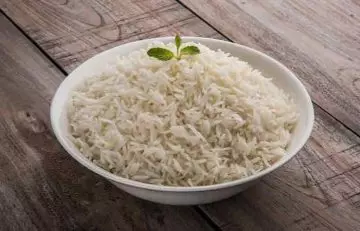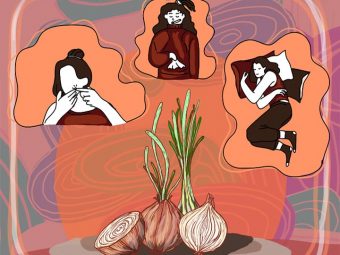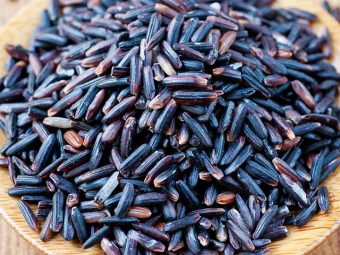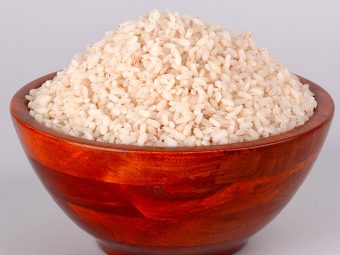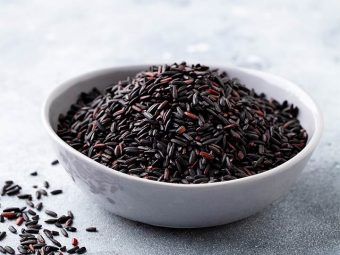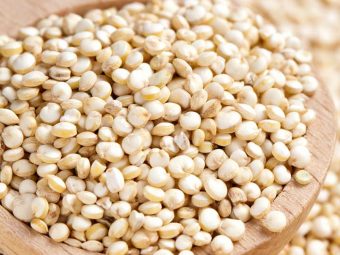What Happens To Your Body If You Eat White Rice Every Day
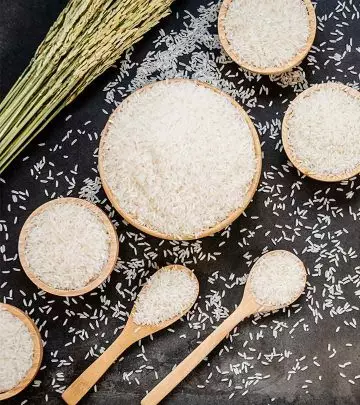
Image: Shutterstock
Did you know that more than half the world’s population relies on rice as the primary source of nutrition? So if you think you are the only one who can’t replace rice with tortillas, you are not alone! Even though it is a known fact that brown rice is healthier and more nutritious, owing to its higher vitamin and mineral content, people still prefer white rice to other popular staple foods. Rice is a rich source of magnesium, phosphorus, manganese, and other minerals, but in this article, we are here to share the health hazards of white rice if consumed regularly. Read on to know them all.
In This Article
1. Possibility Of Arsenic Poisoning
The substance arsenic is present in rice, so eating this grain may expose you to small quantities of this toxic element (1). Therefore, even though white rice contains less arsenic than brown rice, it is wise to limit your rice intake and eat a wide variety of other grains. Amaranth, quinoa, bulgur, & farro are some alternatives with reduced arsenic content that might be worth a try (2). Another option is to examine whether the arsenic levels are higher or lower in the area where your rice was cultivated. For example, white basmati from places like California, India, & Pakistan can be more deficient in arsenic than rice from other countries.
2. Increases The Possibility Of Metabolic Syndrome
The term metabolic syndrome refers to a cluster of lifestyle factors that may raise the probability that a person may develop cardiovascular disease, type 2 diabetes, or a cerebrovascular accident (3). Here are a few common health ailments that can follow consuming white rice every day.
- Hypertension
- Increased glucose levels in the blood
- High Triglyceride Levels
- A deficiency in HDL cholesterol
In particular, people who consume a significant quantity of white rice daily have been proven to have an increased risk of metabolic syndrome. However, even though researchers have shown a correlation between white rice and diabetes, the association between white rice and cardiovascular disease remains uncertain. Conversely, studies have found that eating brown rice can reduce your chance of developing cardiac problems. For instance, compared to those who consume the fewest whole grains, those who consume the most may have up to a 21% decreased risk of heart disease (4).
3. Could Result In Constipation
According to several studies, constipation is less likely to occur with increased fiber consumption (5). According to the survey, constipation risk decreased by 1.8% for every gram of fiber consumed (6). Because of its low fiber content, white rice is best avoided by those who suffer from constipation.
4. High Glucose Levels
Consistent white rice consumption, which is rich in carbs, has been linked to an increased risk of developing type 2 diabetes (7). While rice is a staple in many diets, it is best to choose whole-grain varieties over their refined white counterparts. It’s substantial in carbohydrates but also has antioxidants, fiber, minerals, and vitamins, so it can help manage blood sugar.
5. Weight Gain
People who rely on white rice may find that they gain weight easily since white rice is a refined product. Its poor fiber content will also increase hunger and make you want to snack frequently. Thus, if you enjoy rice, you should switch to brown rice, which is richer in fiber and may aid in reducing abdominal fat. However, it may cause cholesterol levels to rise. A rise in triglycerides or cholesterol can occur even if the rice has no cholesterol (8). Excess blood sugar levels from eating rice can increase triglycerides, which in turn can raise cholesterol levels. Potentially, it might raise the risk of cardiovascular disease.
Despite its bad reputation, there are times when white rice is preferable to brown rice. For pregnant women, the additional folate in enhanced white rice may be helpful (9). In addition, white rice may be easily digestible and less likely to provoke uncomfortable sensations for those on low-fiber diets or individuals suffering from nausea or heartburn. Brown rice remains the superior choice, though. It has a more excellent range of nutrients such as vitamins, minerals, amino acids, and plant-based substances. In addition, carbohydrates are absorbed more slowly into the bloodstream, making it a better choice for people with diabetes or pre-diabetes because of its low glycemic index. White rice, however, can be enjoyed without remorse as long as it is consumed in proportion.
If you are a person who can’t imagine a meal without rice, we feel you. Many people around the world eat rice twice every day. However, they mostly live in rural parts of the world and are involved in strenuous activities like farming that help them burn the excess calories from the food. So make sure you eat only as much as your body requires to avoid any kind of disease.


